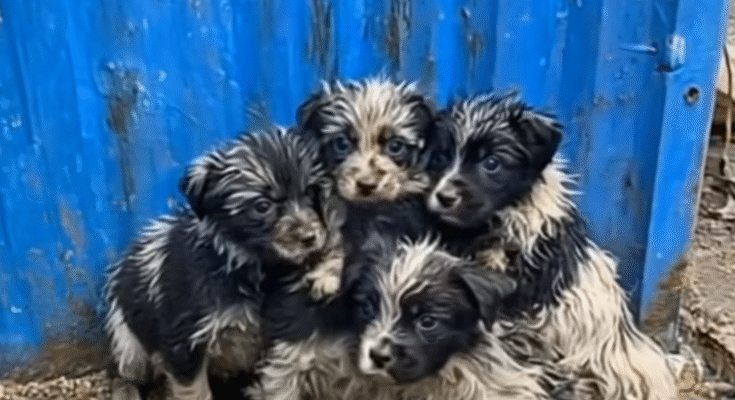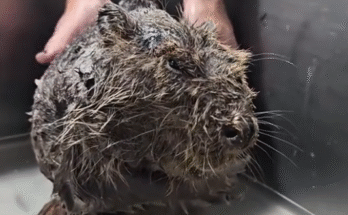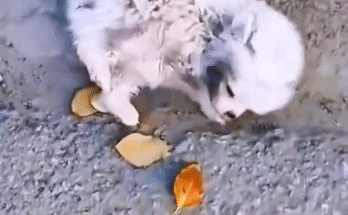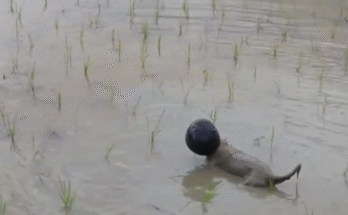It was a bitterly cold morning, the kind that seeps deep into your bones, when a passerby heard the faintest whimper coming from a dark alleyway. Tucked between overflowing garbage bags beside a rusty trash bin were three tiny puppies, trembling and too weak to move. Their matted fur clung to their skeletal frames, and their eyes, dull and lifeless, told stories of suffering no creature should ever endure. Someone had discarded them as if they were refuse, left to die in silence.
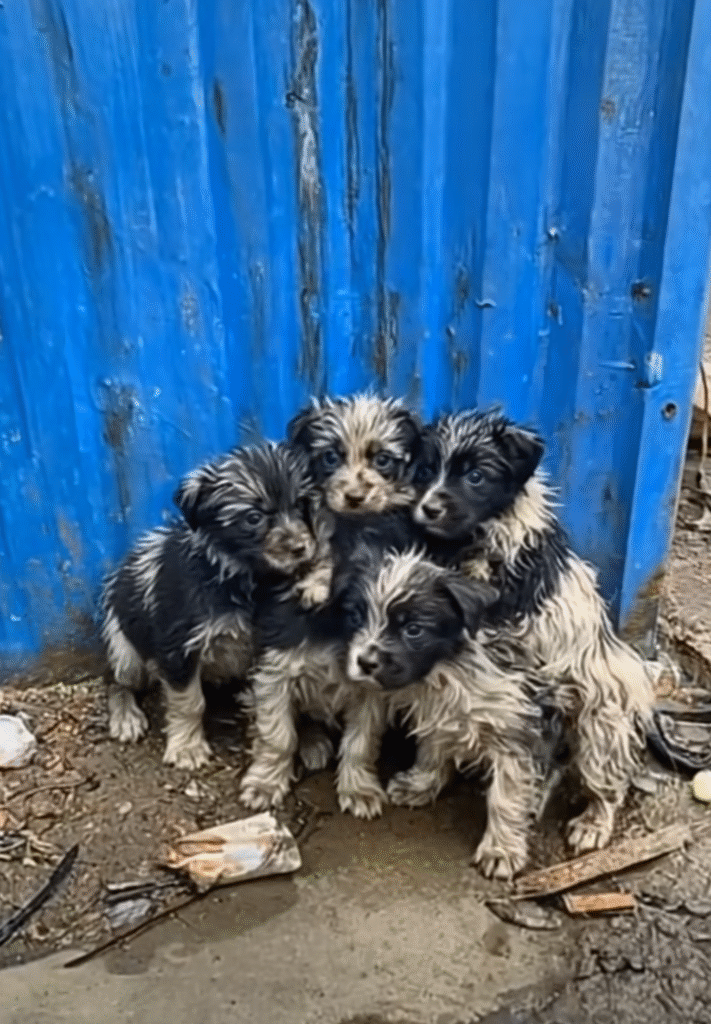
The young woman who discovered them, Lina, was on her way to work. She stopped in her tracks, her heart breaking at the sight. The puppies were no more than five weeks old—still needing their mother’s warmth and nourishment. One tried to lift its head to bark, but it was more of a raspy cough. The others didn’t even react, their energy nearly depleted. Lina knew she couldn’t walk away.
Without hesitation, she removed her coat and gently scooped them up, wrapping them carefully and pressing them to her chest to share her body heat. They smelled of rot and filth, but she didn’t care. Tears welled in her eyes as she whispered softly, “You’re safe now, babies. I’ve got you.”
Lina rushed them to a nearby veterinary clinic. The vet, Dr. Harris, shook his head when he saw their condition. Malnourished, dehydrated, and covered in fleas and sores, their survival chances were slim. “They’re fighters,” Lina insisted. “They were crying. They want to live.”
Dr. Harris and his team sprang into action. IV fluids were administered, and the puppies were gently bathed and wrapped in warm blankets. It would be days before they could even eat properly. The clinic named them Hope, Brave, and Star—symbols of the light that flickered, however faint, in their fragile bodies.
Lina visited them every day after work. She read to them, brought in soft toys, and played gentle music. Slowly, their tails began to wag. Brave, the boldest of the trio, was the first to attempt walking again. Star, the quietest, was the last to eat on her own—but when she did, she licked the bowl clean and looked up with bright, grateful eyes. Hope, who had seemed the weakest, became the most affectionate, snuggling into Lina’s lap the moment she walked into the room.
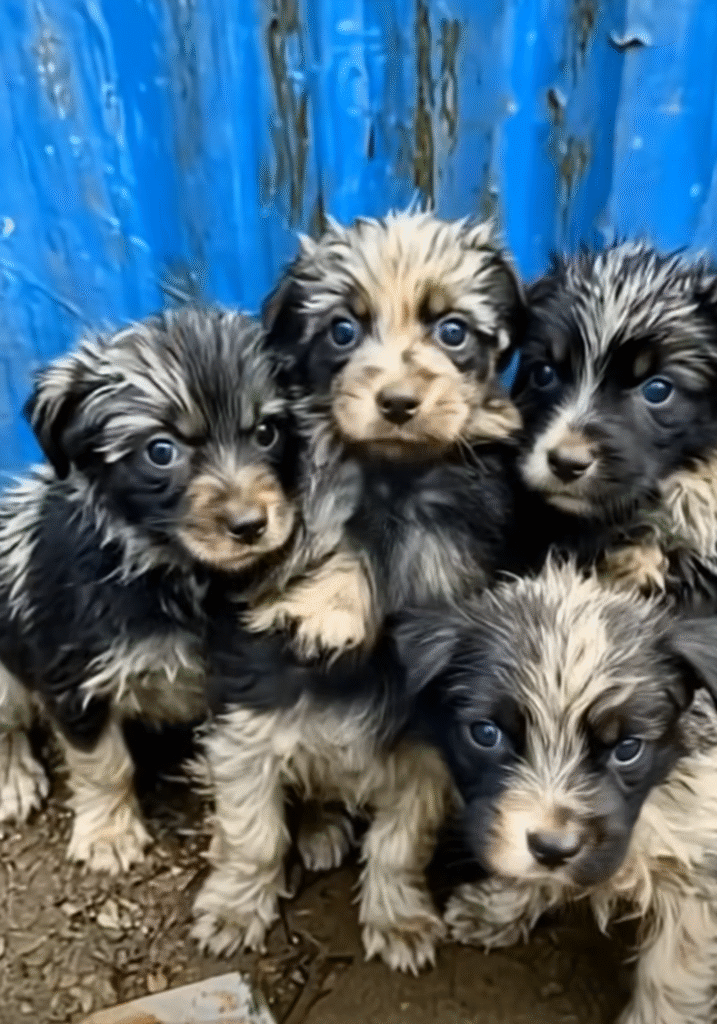
Weeks passed, and the clinic became a second home for the pups. The staff adored them, and visitors would often stop to check on their progress. Their fur grew back soft and shiny, their eyes sparkled with life, and their personalities blossomed.
But their journey wasn’t just physical—it was emotional, too.
One day, a young boy named Milo came to the clinic with his mother. He had recently lost his beloved dog, Max, and hadn’t smiled since. When he met Star, something clicked. The quiet pup nuzzled into his arms and licked his cheek. Milo burst into tears—not of sadness, but of healing. Star had found her person.
Hope was adopted by an elderly couple, Martha and George, who had always wanted a dog but never found the right match. Hope was perfect. She loved curling up on George’s lap while he read the newspaper, and she followed Martha around the garden like a tiny shadow.
Brave, true to his name, stayed with Lina. She couldn’t bear to part with him. He had been the first to respond to her warmth, the first to wag his tail, and the one who now greeted her with excited yips every morning. Together, they formed an unbreakable bond.
Their story spread quickly. Lina posted about their rescue and recovery on social media, and it went viral. Messages poured in from around the world—people touched by the pups’ resilience and the kindness of strangers. Donations flooded the clinic, allowing Dr. Harris to expand his facilities and rescue even more animals in need.
More importantly, it reminded people of the incredible power of compassion. So many had walked by that alley, oblivious to the suffering hidden in the shadows. But one person cared enough to stop. And that changed everything.
The puppies’ before-and-after photos were shared across platforms: the image of three frail, broken bodies curled beside a trash bin versus the vibrant, joyful dogs they had become. Hope with her pink collar and big brown eyes, Star curled up next to Milo on a sunny windowsill, and Brave chasing butterflies in Lina’s garden.
Their tale inspired local shelters to partner with schools, teaching children about animal welfare and empathy. A local artist even painted a mural of the three pups titled “Rescued Hearts,” which became a beloved landmark in the community.
What made their story so powerful wasn’t just their physical transformation—it was the emotional connection they forged with everyone who met them. In a world that often feels divided and fast-paced, these small, abandoned creatures brought people together. They reminded everyone that healing is possible, that love matters, and that no life is too small to save.
And perhaps, most importantly, they proved that even when discarded like trash, the spark of life remains—waiting for someone to notice, to care, and to believe in the power of second chances.
Today, Brave still sleeps at Lina’s feet every night. She often looks at him and whispers, “You were shivering in the cold, but now you’re home.” And Brave, sensing her love, nuzzles closer and lets out a contented sigh. He is warm. He is safe. He is loved.
And so are Hope and Star—once forsaken, now cherished beyond measure.
